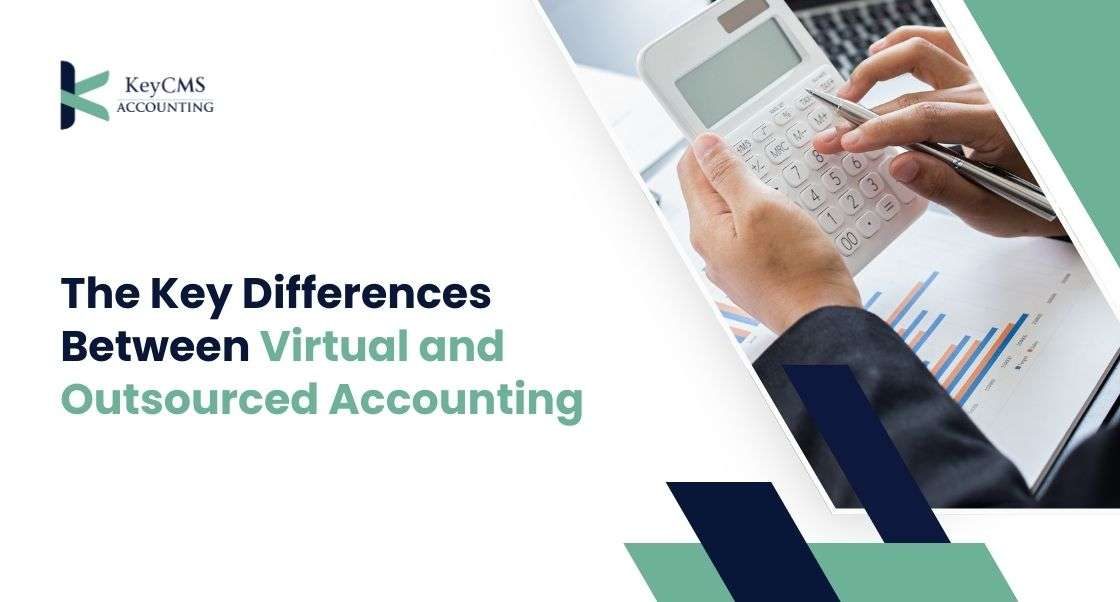In today’s fast-paced business environment, small and medium-sized enterprises (SMEs) as well as large corporations are constantly searching for smarter, more efficient ways to manage their finances. With the rise of digital transformation and globalized business services, two popular options have emerged: virtual accounting and outsourced accounting.
At first glance, these terms might sound interchangeable. After all, both involve delegating accounting functions to someone outside of the company’s in-house staff. However, there are some critical differences in how each model operates, the types of services provided, and the value they deliver. Understanding these distinctions can help business owners make the right decision for their financial management needs.
What Is Virtual Accounting?
Virtual accounting refers to the delivery of accounting services remotely, usually through cloud-based technology. Instead of hiring an in-house accountant to work in your office, a virtual accountant works online, often as part of a specialized firm. These professionals handle bookkeeping, reconciliations, reporting, and sometimes advisory services, using secure accounting software platforms.
Virtual accounting is essentially the digital version of having a traditional accountant—except the accountant doesn’t sit in your office. Instead, you and your team access financial data in real time through software like QuickBooks Online, Xero, or NetSuite. Communication usually happens via email, video calls, or project management tools.
Key characteristics of virtual accounting include:
- Cloud-based collaboration with access to real-time financial data.
- Services are often customized to the business’s size and industry.
- Scalability as the business grows.
- Strong focus on transparency and automation.
What Is Outsourced Accounting?
Outsourced accounting is broader. It involves contracting an external firm (often offshore) to manage some or all accounting and finance functions. Outsourcing can include everything from bookkeeping and payroll to tax preparation, compliance, and even CFO-level advisory.
This approach typically reduces costs because many outsourced firms operate in regions with lower labor expenses. However, it often involves less direct interaction compared to virtual accounting, as the emphasis is on delegation rather than collaboration.
Key characteristics of outsourced accounting include:
- Work is often performed by offshore teams.
- Emphasis on cost savings and efficiency.
- May cover a wide scope, from basic data entry to high-level reporting.
- Businesses have less day-to-day control over processes.
Key Differences Between Virtual and Outsourced Accounting
While both models remove the need for in-house accounting staff, the way they function is quite different. Let’s break down the core differences between the two:
1. Location of Services
- Virtual Accounting: Typically handled by local or domestic accountants working remotely. They operate in the same legal and regulatory environment as your business, which makes compliance more straightforward.
- Outsourced Accounting: Often performed by international firms, with services handled offshore. While this can be cost-effective, businesses must be cautious about time zone differences, communication challenges, and varying regulatory standards.
2. Level of Collaboration
- Virtual Accounting: Feels like working with an in-house accountant who just happens to be remote. Communication is frequent, and you have real-time visibility into your finances.
- Outsourced Accounting: Interaction is generally more transactional. You hand over financial tasks and receive deliverables but may not have much ongoing collaboration.
3. Scope of Services
- Virtual Accounting: Focuses primarily on bookkeeping, reconciliations, reporting, and sometimes advisory tailored to your business needs.
- Outsourced Accounting: Can cover a wider range of functions—from simple data entry to payroll, tax filing, audit prep, and CFO-level services.
4. Technology and Tools
- Virtual Accounting: Relies heavily on cloud-based platforms where both you and your accountant access the same data. Automation tools are common, making the process transparent and efficient.
- Outsourced Accounting: May or may not use cloud-based tools accessible to you in real time. In many cases, the outsourcing firm uses its own systems, which can limit your visibility into daily transactions.
5. Cost Structure
- Virtual Accounting: Typically more affordable than hiring in-house staff but may cost more than outsourced services because you’re paying for domestic expertise and personalized attention.
- Outsourced Accounting: Usually the lowest-cost option, especially if the provider is overseas. However, lower cost sometimes comes at the expense of responsiveness or customization.
6. Compliance and Risk Management
- Virtual Accounting: Since virtual accountants are often local, they’re well-versed in national accounting standards, tax laws, and industry regulations. Compliance is simpler and less risky.
- Outsourced Accounting: Requires careful vetting to ensure the provider understands your local regulations. Misalignment here can create compliance risks or tax errors.
7. Customization and Personalization
- Virtual Accounting: Highly customizable to your business. Virtual accountants often act as advisors, helping interpret financial reports and guiding strategic decisions.
- Outsourced Accounting: Typically follows a standardized, process-driven approach designed to maximize efficiency across multiple clients. Customization may be limited.
Advantages of Virtual and Outsourced Accounting
Virtual Accounting
- Real-time access to financial data.
- Personalized service with stronger communication.
- Better alignment with local compliance needs.
- Flexibility to scale as your business grows.
Outsourced Accounting
- Significant cost savings compared to in-house or virtual options.
- Ability to offload large volumes of work.
- Access to a wide range of services, from bookkeeping to CFO support.
- Time savings, allowing business leaders to focus on growth.
Which Option Is Right for Your Business?
The choice between virtual and outsourced accounting depends on your company’s size, budget, and goals.
- Choose Virtual Accounting if:
You want ongoing collaboration, transparency, and tailored advice while keeping compliance risks low. This option is ideal for businesses that value real-time insights and need a financial partner rather than just a service provider. - Choose Outsourced Accounting if:
You’re focused primarily on cutting costs and offloading routine tasks. If your business has high-volume, repetitive accounting needs and you don’t require daily visibility or advisory, outsourcing could be the most efficient solution.
Final Thoughts
While virtual and outsourced accounting share similarities, they serve different purposes. Virtual accounting is about collaboration, transparency, and real-time insights—essentially giving you the benefits of an in-house accountant without the overhead. Outsourced accounting, on the other hand, is about efficiency and cost savings, often achieved by delegating work to offshore providers.
Ultimately, the right choice depends on whether your priority is strategic financial partnership (virtual accounting) or streamlined cost-effective processes (outsourced accounting). By understanding the key differences, business owners can make an informed decision that supports both their financial health and long-term growth.




